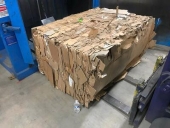








Living in Anjou , France,
For the many not for the few
http://www.permies.com/t/80/31583/projects/Permie-Pennies-France#330873




Wladimir Bonsegnori wrote:Dear Permies,
I will soon start growing food on a small piece of land that consists of clay soil that has not been cultivated for the last 30 years. I would prefer not to till, but there are really a lot of weeds there and the alternatives to tilling that I researched do not seem to be very atractive: solarization would use cardboard and/or newpapers, and I would prefer not to use them since I imagine that the soy used in the cardboard glue is very far away from being organic.
What would be, in your opinion, the best and healthiest solution to prepare this soil for cultivation for the first time? Is there something like soft tilling, that would not disturb the soil a lot?
Thanks, permies. I learned a lot from you here. You are the best.

"We're all just walking each other home." -Ram Dass
"Be a lamp, or a lifeboat, or a ladder."-Rumi
"It's all one song!" -Neil Young














|
Crusading Chameleon likes the size of this ad:
Homestead Pastured Poultry course
https://permies.com/wiki/364740/Homestead-Pastured-Poultry
|



